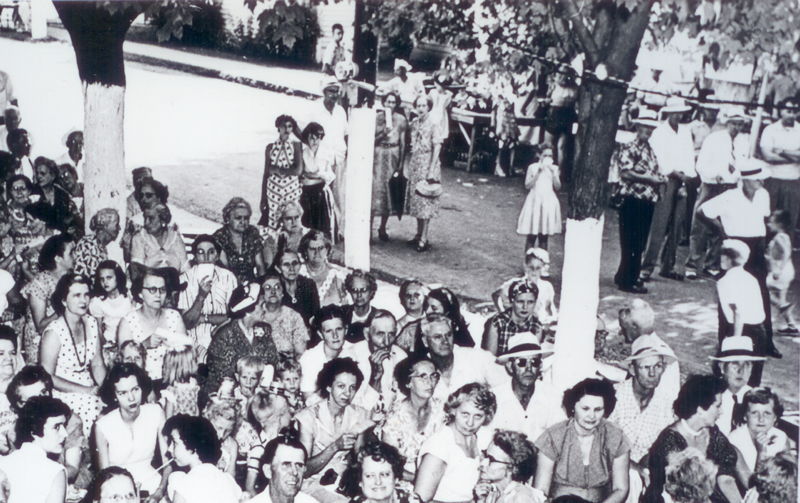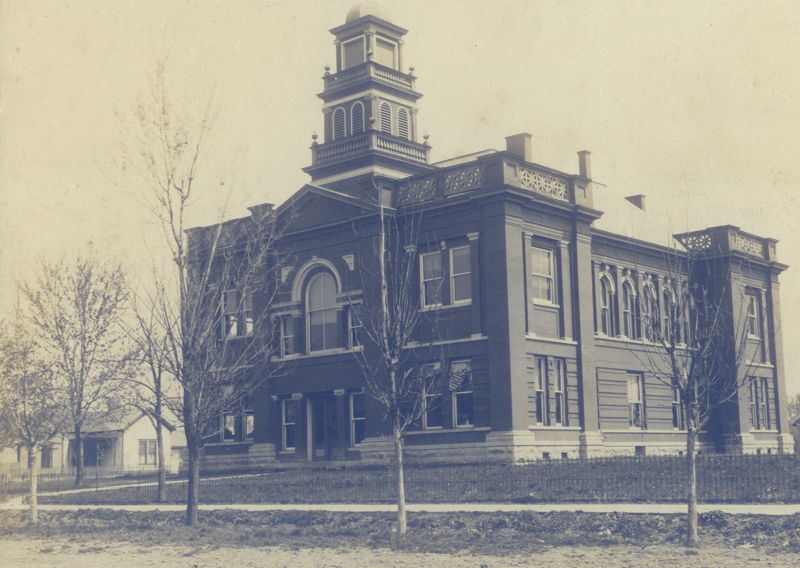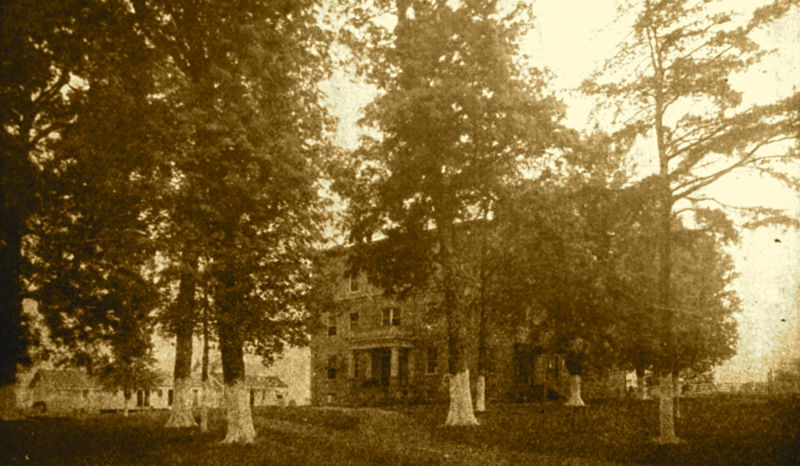
The following article by David Strange appeared in The Courier-Journal on 14 Sep 2014. It is archived here with additional information for your reading enjoyment.
I was recently asked, "Why did people paint trees?"
Maybe you remember painted trees, or have seen pictures. People would "paint" tree trunks white, generally from the ground up to as far as a child could reach. It was pretty common back to 1890, and quite likely long before. At one time, mostly from the 1940's through the mid-60's, it seemed like nearly everyone painted their trees. In fact, I'm told if someone didn't, they stood out as odd.
Now let me clarify. It was not paint that was used, but whitewash (the fancy name is kalsomine). Whitewash is basically a mix of slaked lime and water along with a few other ingredients. Have you ever heard the phrase, "Too poor to paint; too rich to whitewash"? Whitewash was cheap and bright, but didn't last long, and its chalky finish rubbed off on clothes if you brushed against it. It was often a child's chore to whitewash, as you might recall from Mark Twain's "Tom Sawyer", thus the usual height on trees.
People say that it has its advantages on the farm. The whitewash has some antibacterial properties, and it tends to fill in the rough-sawn wood, giving less opportunity for bugs. It used to be common practice to annually whitewash the dairy barn and outhouses.
It is widely believed that whitewashing trunks of thin-barked trees, such as fruit trees, helps prevent sunscald damage in winter. Some people took to whitewashing tree trunks to prevent bug infestations as well, thinking it to be a pesticide of a sort, or at least making it easier to spot bug bore holes in the trunk.
Like a lot of things in life, there's a bit of truth to this, and a whole lot of doing it because everyone else is doing it. I recently asked my Dad why we painted all the trees in our yard when I was a kid. At first he said that it was to protect the tree. But then he paused, "Really, I guess I just did it because everyone else did."
I notice in some pictures from the 1950's that everything seemed to be painted. Young trees; old trees; even telephone poles and sign posts. At a time with few street lights, that bright white color really stood out in the dark. So I suppose that it just became the thing to do. Lois Noe remembers that everybody in the Brooks area did it back in the 1950's and 60's. She says she never really knew why. The same was true for Lebanon Junction.
Memories were made at many of those whitewashed trees.
Cindy Bauman remembers such a spot: "It was a huge tree and it was encircled with a white, round wrought iron sectioned bench. That was the Friday night watermelon spot. My parents cut the watermelon on a nearby table; then we all set around the whitewashed tree and ate watermelon. There was a usual crowd of ten or so. I can see my mom's friend, Ann Peacock, with her zipper-on-the-side pedal-pushers, white folded down cotton princess anklets and a perfect velvet bow in her hair, all Audrey Hepburn style classy. Whitewash helped reflect light from the porch and it seemed to stay daylight longer there. The fireflies were icing on the cake."
By around 1965 modern times were rushing in, and the practice of tree painting declined. The once-common practice quickly faded away like whitewash on a tree in the summer rain. Bob Hill, former CJ columnist and knower of all things agricultural, tells me that he has not seen a local tree painted in years.
But like memories, look closely and you might still find a speck of light on that old bark.NOTE: Real paint should not be used on trees. It can kill the bark, and thus the tree. Only whitewash should be used.



Copyright 2014 by David Strange, Shepherdsville KY. All rights are reserved. No part of the content of this page may be included in any format in any place without the written permission of the copyright holder.
The Bullitt County History Museum, a service of the Bullitt County Genealogical Society, is located in the county courthouse at 300 South Buckman Street (Highway 61) in Shepherdsville, Kentucky. The museum, along with its research room, is open 10 a.m. to 4 p.m. Monday through Friday. Saturday appointments are available by calling 502-921-0161 during our regular weekday hours. Admission is free. The museum, as part of the Bullitt County Genealogical Society, is a 501(c)3 tax exempt organization and is classified as a 509(a)2 public charity. Contributions and bequests are deductible under section 2055, 2106, or 2522 of the Internal Revenue Code. Page last modified: 12 Sep 2024 . Page URL: bullittcountyhistory.org/memories/whitewash.html